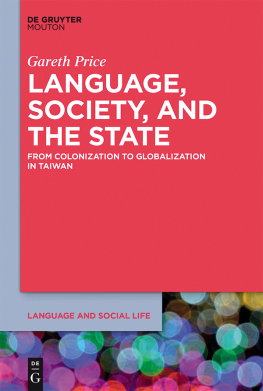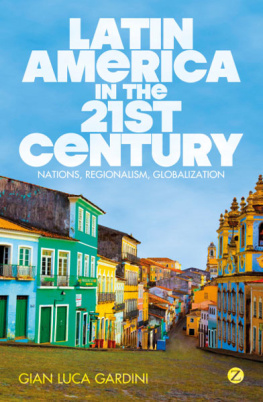First published by:
Published in 2002 by
Routledge
29 West 35th Street
New York, NY 10001
Published in Great Britain by
Routledge
11 New Fetter Lane
London EC4P 4EE
This edition published 2012 by Routledge:
Routledge
Taylor & Francis Group
711 Third Avenue
New York, NY 10 017
Routledge
Taylor & Francis Group
2 Park Square, Milton Park
Abingdon, Oxon OX14 4RN
Copyright 2002 by Librairie Arthme Fayard, 1999
Ouvrage publi avec le soutien du Ministre franais de la Culture Centre National du Livre./This book received a translation grant from THE FRENCH MINISTRY OF CULTURE-CENTRE NATIONAL DU LIVRE.
All rights reserved. No part of this book may be reprinted or reproduced or utilized in any form or by any electronic, mechanical or other means, now known or hereafter invented, including photocopying and recording or in any information storage or retrieval system, without permission in writing from the publishers.
Library of Congress Cataloging-in-Publication Data
Gruzinski, Serge.
[Pense mtisse. English]
The mestizo mind : The intellectual dynamics of colonization and globalization I Serge Gruzinski ; translated from the French by Deke Dusinberre.
p. cm.
Includes bibliographical references and index.
ISBN 0-415-92878-8 (Hardcover : alk. paper) ISBN 0-415-92879-6 (Paperback : alk. paper)
1. Latin AmericaCivilization. 2. MestizajeLatin America. I. Title.
F1408.3 .G7813 2002
980--dc21
2002002618
The subjects covered in this book were extensively discussed in my seminar at the cole des Hautes tudes en Sciences Sociales, in Paris, from 1994 to 1998. Criticism and comments by Carmen Salazar, Louise Bnat-Tachot, Sonia Rose, Juan Carlos Estenssoro, Mary del Priore, and Guilia Bogliolo Bruna helped me to correct and enrich the realms that we explored together. Several chapters were presented and discussed in conferences organized by Manuel Ramos and the Centro de Estudios de Historia de Mxico de Condumex (Mexico City); Berta Ares and the Escuela de Estudios Hispanoamericanos (Seville); Eddy Stols and lUniversit Catholique de Louvain (Belgium); Clara Gallini and the Associazione Internazionale Ernesto de Martino (Rome); Adauto Novaes and the Funarte Foundation (Rio de Janeiro); and Janice Theodoro da Silva, Laura de Mello e Souza, and the University of So Paulo. Dcio Guzmn, my first reader, and his colleagues at the federal University of Par and the Museu Emilio Goeldi in Belm enabled me to discover a new world, the Amazon. Photographs by Gilles Mermet and Marc Guillaumot provided me with a new perspective. The Instituto Nacional de Antropolga et Historia (Mexico City) and its director, Seora Mara Teresa Franco, made its treasures available to me. Finally, I would like to thank Agns Fontaine at Fayard for welcoming and patiently rereading this new manuscript.
THE MESTIZO MIND
JANUARY 1896: ACOMA, NEW MEXICO
A priest was celebrating mass in the little church of Acoma, among the Hopi Indians of New Mexico. The congregation included a German visitor, Aby Warburg, one the founding fathers of art history, an eminent specialist in the Renaissance who was the scion of a very rich family of bankers established on both sides of the Atlantic. Warburg noted the native murals on the walls: During the service I noticed that the wall was covered with pagan cosmological symbols.
A photograph taken by Warburg, moreover, shows a very ancient and universal motif for representing the growth, the upward and downward motion of nature. Another photo shows the interior of the churchHopi women dressed in black like Spanish peasants, praying before a baroque altar laden with statues of saints whose painted colors can be imagined.
Warburg had not made the journey in order to explore how Native American beliefs had been transformed or contaminated.
Having traveled to United States to attend the wedding of his brother Paul (to one of the daughters of the Loeb banking family), Warburg soon tired of East Coast society and set off on an exploration of pre-Hispanic, savage America, a comparative quest for eternal nativeness and mythical imagination.
Thus Warburg blithely combined the paths of anthropology and art history. He had even become a field-worker who used native informants, as did Franz Boas (whom he would meet in New York) and specialists from the Smithsonian (who gave him a warm welcome in Washington). Warburg was a pioneer, and still remains one to the extent that even today his anachronistic approach surprises people: we are little accustomed to dealing with the native American past and sixteenth-century Europe in the same way, and even less inclined to look to the indigenous world for keys to a better understanding of the Renaissance.
A century later, it is hard not to want to pick up Warburgs study where he left off, starting this time from a series of clues that he unwittingly left behind: the photograph of the baroque altarpiece, allusions in his notes to Hispano-Indian layers, and a cutting from the Saint Louis Daily Globe, dated December 14, 1895, recounting the miraculous appearance of the skeleton of the patron saint of a church in Isleta, New Mexico. All these details clearly point to something other than pre-Hispanic, savage America. They raise the question of whether Warburgs intuitions perhaps had a historical basis, whether the link between Native Americans and the Renaissance traced a path that existed elsewhere than solely in his imaginationnamely, the dusty path from the south once taken by missionaries from Mexico, bearers of an art and a faith whose many signs can still be seen in this region of the United States. Perhaps the primitive cultures that Warburg thought he was observing were cultures already permeated with European features, perhaps they were mestizo cultures. This is what we can learn from the history of New Mexico, the culmination of four centuries of confrontation between European invaders and indigenous societies which led to a mixture of colonization, resistance, and mestizo processes.
Warburgs travels among the Hopi converge with the themes that run throughout this book: Amerindian societies, Renaissance Italy, and the search in America for keys to an understanding of the Renaissance, plus the overall context of globalizationof which the Warburg family was an emblematic figure in the late nineteenth centurynot to mention the difficulty we still experience in seeing mestizo phenomena, much less analyzing them.
With the triumph of the U.S. version of economicswhat Geminello Alvi calls the American age phenomena that scramble our usual landmarks have been proliferating: the mlange of the worlds cultures, multiculturalism, and a defense of identity in forms ranging from simple preservation of local traditions to bloody expressions of xenophobia and ethnic cleansing.
At first sight, the distinctions seem clear. The fragmentation of nation-states weakened by the global system has been met by the reaffirmation of ethnic, regional, and religious identities, as demonstrated by ethnic or identity-affirming movements among indigenous, minority, and immigrant populations. The link between local crisis and globalization has even been made explicit, as in Mexico where the Zapatista movement in Chiapas constantly proclaims its rejection of economic globalization.









